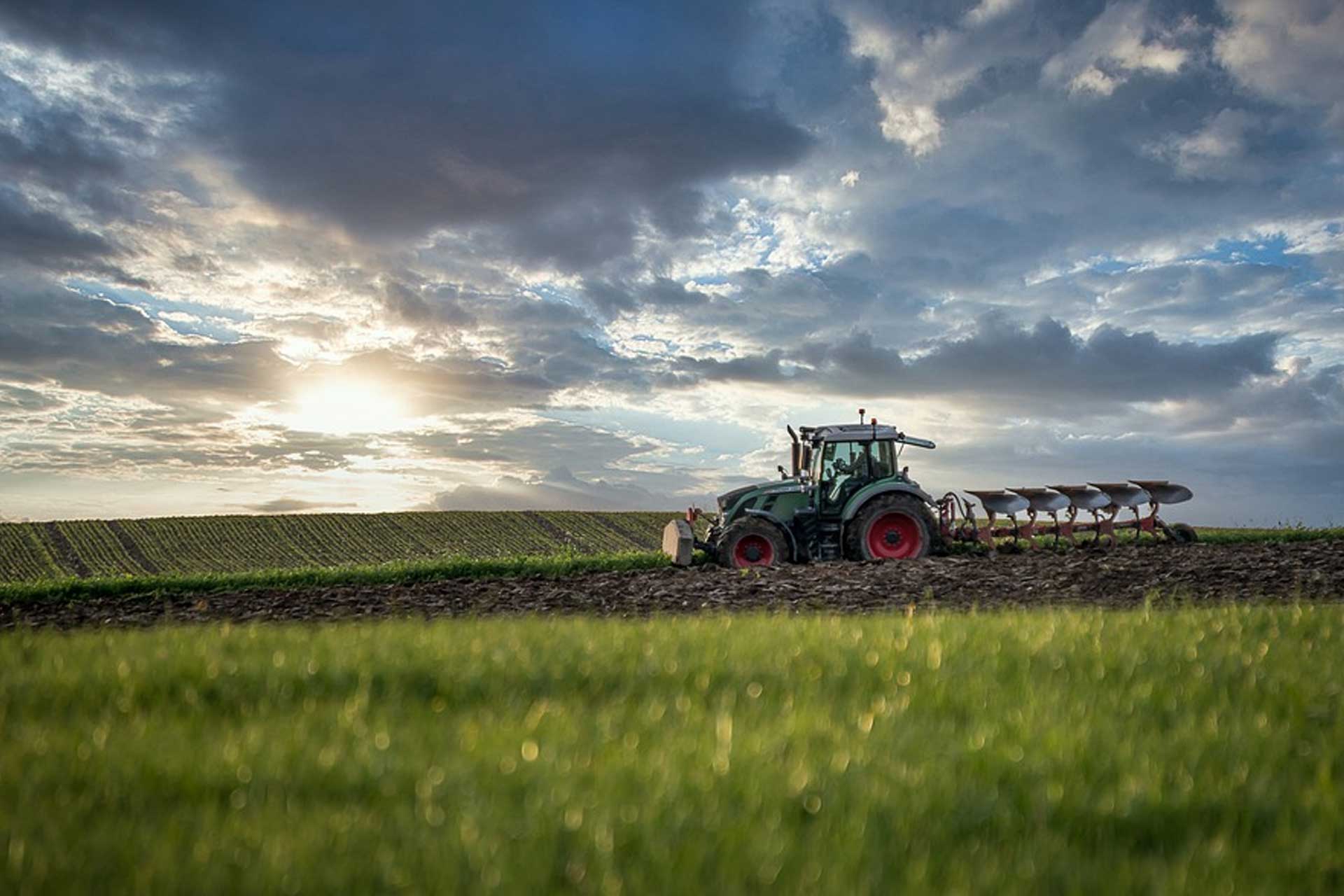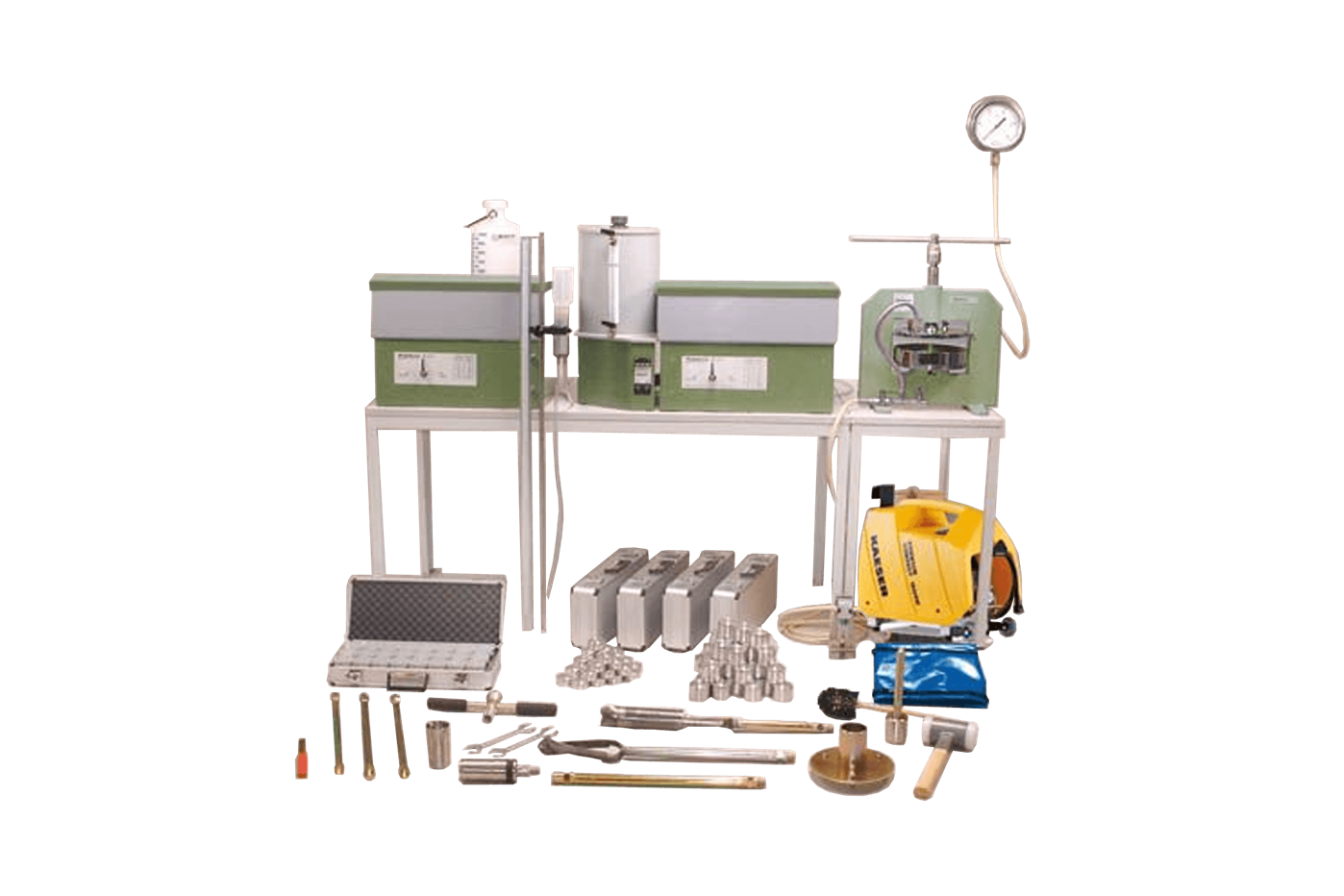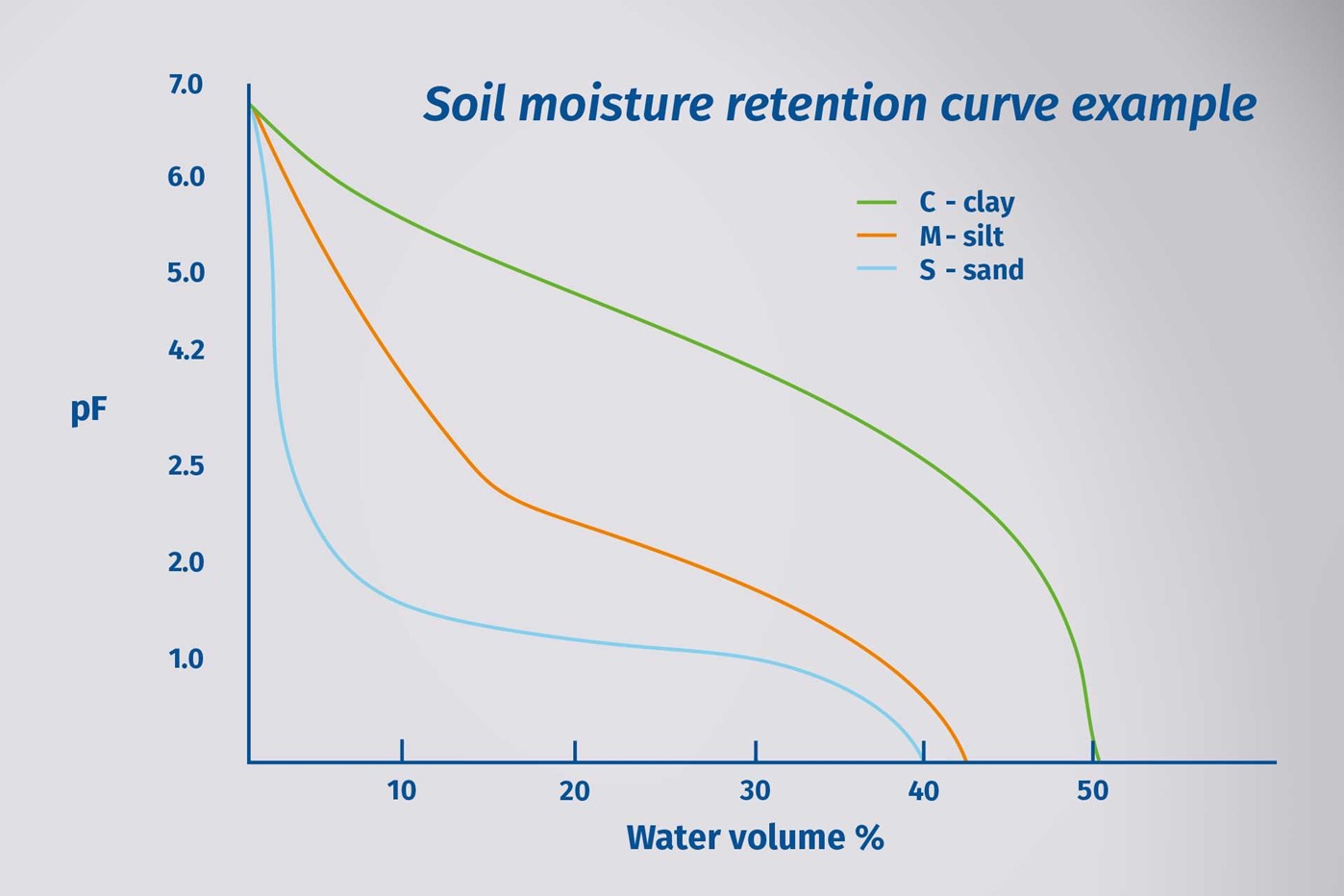

The PF curve shows the relationship between the soil's moisture contents and suction. These moisture contents vary with the same suction and differ per type of soil. With the right equipment, the pF curve can be determined for each type of soil, which clearly shows the availability of water for that type of soil. We offer three laboratory devices to make a complete pF determination.
View products
The relationship between soil water retention and moisture content largely determines the suitability of a soil for agricultural purposes. Understanding this helps with effective watering.
There are different ways to gain insight into the soil moisture content at different suction pressures. Royal Eijkelkamp offers the following laboratory equipment for this purpose.


For the wettest part of the curve. Uses undisturbed samples of 53 or 60 mm diameter. For up to 40 sample rings.
This method shapes the largest part of the curve, pF 2.0 to 2.7.
This instrument determines the driest range of the pF-curve, from 3.0 to 4.2.
The sets with ceramic plates are suitable for the pF-range of 2.0 to 4.2. In addition, it can be used for the calibration of soil moisture blocks or soil moisture measurement equipment.
The soil moisture curve, also known as the soil suction curve or pF curve, is a graphical representation of the moisture content at varying suction pressures. A soil can retain a lot of moisture, but if the soil already retains moisture at lower suction pressures, this moisture is not available to the plant and stunted growth can occur early on.
In general, sandy soils already contain little water at low suction pressures and clay soils at higher suction pressures still have a relatively large amount of water in the pores, but this is not available. If the soil moisture retention curve is available for a specific soil, you can determine with either a soil moisture sensor or a tensiometer whether watering is necessary.


Need advice choosing the right product for your application? Our specialist Michiel is happy to help.